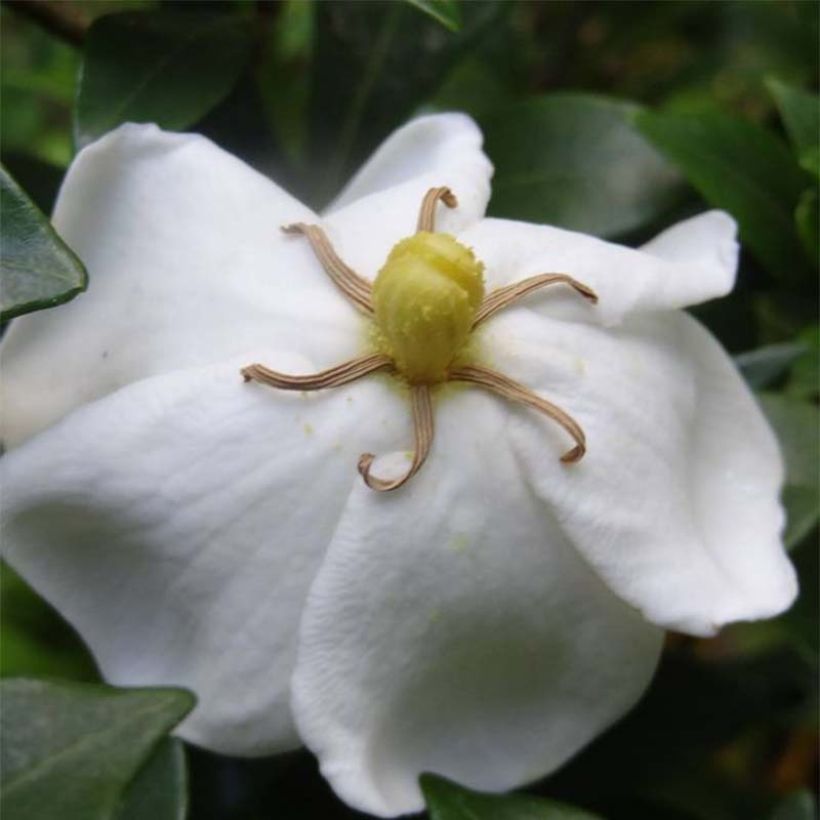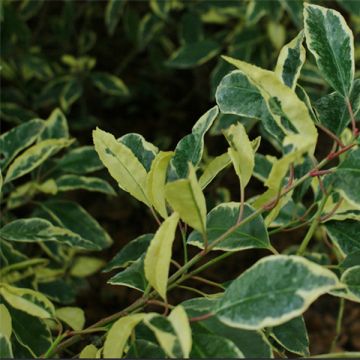

Gardenia Sweetheart - Jasmin du Cap
Gardenia jasminoides Sweetheart
Gardenia jasminoides Sweetheart
Cape Jasmine, Common Gardenia
Special offer!
Receive a €20 voucher for any order over €90 (excluding delivery costs, credit notes, and plastic-free options)!
1- Add your favorite plants to your cart.
2- Once you have reached €90, confirm your order (you can even choose the delivery date!).
3- As soon as your order is shipped, you will receive an email containing your voucher code, valid for 3 months (90 days).
Your voucher is unique and can only be used once, for any order with a minimum value of €20, excluding delivery costs.
Can be combined with other current offers, non-divisible and non-refundable.
Home or relay delivery (depending on size and destination)
Schedule delivery date,
and select date in basket
This plant carries a 24 months recovery warranty
More information
We guarantee the quality of our plants for a full growing cycle, and will replace at our expense any plant that fails to recover under normal climatic and planting conditions.
Would this plant suit my garden?
Set up your Plantfit profile →
Description
The Sweetheart Gardenia is a recent variety that will seduce with its vigour and long-lasting flowering with a sweet fragrance. While this hybrid gardenia is not the hardiest, it proves to be more vigorous and more floriferous than usual compact varieties. Its wonderful flowering, with single, creamy-white, star-shaped flowers, lasts from mid-spring to the end of summer. Hardy down to -8/-10 °C (17.6/14 °F) in well-drained soil, this evergreen shrub thrives in the ground away from scorching sun or in partial shade, in lime-poor, fertile soil that remains moist in summer. While it prefers mild and humid oceanic climates, it performs very well even in more continental areas. It deserves a prominent place on the terrace or close to the house.
Gardenia jasminoides is a shrub of the Rubiaceae family, native to Asia. It is commonly found in the wild in Vietnam, southern China, Taiwan, Japan, and India, in mild and humid, subtropical to tropical climates. Its cultivation in China dates back at least a thousand years, and in recent years numerous American cultivars of varying hardiness have been produced. 'Sweetheart', from which it originates, slowly forms a small shrub with a fairly dense habit, reaching 70 cm (27.6 in) in all directions in pots and 1 m (3 ft 4 in) in the ground under suitable conditions. Its white flowers, with 6 waxy petals and a powerful fragrance, bloom abundantly from May to July, and then more sporadically until September. They appear solitary in the axils of the leaves, at the top of the branches, measuring 5 cm (2 in) in diameter and fading to pale yellow. The flowers stand out well against its elegant leaves, which are slightly thinner than those of usual varieties. They are entire, shiny and dark green, with very prominent veins. The bark is grayish. Gardenias have a very long lifespan and are more floriferous in their young age.
Despite their somewhat demanding nature, Gardenias are among the most coveted shrubs by plant enthusiasts. It is undeniable that when the conditions are met, in a humid and mild climate and in fertile, lime-poor soil, sheltered from scorching sun and frost, the gardenia proves to be one of the most beautiful plant species. The hardiness of certain varieties like Sweetheart, often questioned, should be moderated according to the duration of frost and the water content of the soil. In mild and humid climates, and even in more continental areas, in well-sheltered locations, the cultivation of gardenias in the ground can be perfectly successful, as long as they are protected from draughts that they dislike. Elsewhere, it is preferable to grow them in pots that can be taken inside, in a cold greenhouse during winter. In the garden, camellias, rhododendrons, pieris, and kalmias will make excellent companions for this delightful shrub.
Report an error about the product description
Gardenia jasminoides Sweetheart in pictures




Plant habit
Flowering
Foliage
Botanical data
Gardenia
jasminoides
Sweetheart
Rubiaceae
Cape Jasmine, Common Gardenia
Cultivar or hybrid
Other Gardenia
View all →Planting and care
Plant Gardenia jasminoides Sweet heart in a partially shaded bed or in a spot exposed to the morning sun, sheltered from the hottest rays of the sun. Exposure is important, as the Gardenia loves the heat (but not dry soil or air), and the harsh rays of the sun can scorch its foliage and flower buds. This plant dislikes sudden changes in exposure or temperature. To improve its hardiness by a few degrees, plant it sheltered from cold and dry winds, and make sure there is no stagnant moisture at its base in winter. On the other hand, it will need a good supply of preferably non-calcareous water, especially in summer, during its establishment period. Therefore, choose a well-draining, humus-rich substrate, for example a mixture of compost and friable garden soil, lightened with non-calcareous sand, coarse gravel or clay pebbles. Whether you are in an area with mild winters or not, it is wise to protect container-grown plants in an unheated conservatory or a cold greenhouse. The Gardenia also requires regular fertilisation: use a specific fertiliser for acid-loving shrubs.
Planting period
Intended location
Care
This item has not been reviewed yet - be the first to leave a review about it.
Similar products
Haven't found what you were looking for?
Hardiness is the lowest winter temperature a plant can endure without suffering serious damage or even dying. However, hardiness is affected by location (a sheltered area, such as a patio), protection (winter cover) and soil type (hardiness is improved by well-drained soil).

Photo Sharing Terms & Conditions
In order to encourage gardeners to interact and share their experiences, Promesse de fleurs offers various media enabling content to be uploaded onto its Site - in particular via the ‘Photo sharing’ module.
The User agrees to refrain from:
- Posting any content that is illegal, prejudicial, insulting, racist, inciteful to hatred, revisionist, contrary to public decency, that infringes on privacy or on the privacy rights of third parties, in particular the publicity rights of persons and goods, intellectual property rights, or the right to privacy.
- Submitting content on behalf of a third party;
- Impersonate the identity of a third party and/or publish any personal information about a third party;
In general, the User undertakes to refrain from any unethical behaviour.
All Content (in particular text, comments, files, images, photos, videos, creative works, etc.), which may be subject to property or intellectual property rights, image or other private rights, shall remain the property of the User, subject to the limited rights granted by the terms of the licence granted by Promesse de fleurs as stated below. Users are at liberty to publish or not to publish such Content on the Site, notably via the ‘Photo Sharing’ facility, and accept that this Content shall be made public and freely accessible, notably on the Internet.
Users further acknowledge, undertake to have ,and guarantee that they hold all necessary rights and permissions to publish such material on the Site, in particular with regard to the legislation in force pertaining to any privacy, property, intellectual property, image, or contractual rights, or rights of any other nature. By publishing such Content on the Site, Users acknowledge accepting full liability as publishers of the Content within the meaning of the law, and grant Promesse de fleurs, free of charge, an inclusive, worldwide licence for the said Content for the entire duration of its publication, including all reproduction, representation, up/downloading, displaying, performing, transmission, and storage rights.
Users also grant permission for their name to be linked to the Content and accept that this link may not always be made available.
By engaging in posting material, Users consent to their Content becoming automatically accessible on the Internet, in particular on other sites and/or blogs and/or web pages of the Promesse de fleurs site, including in particular social pages and the Promesse de fleurs catalogue.
Users may secure the removal of entrusted content free of charge by issuing a simple request via our contact form.
The flowering period indicated on our website applies to countries and regions located in USDA zone 8 (France, the United Kingdom, Ireland, the Netherlands, etc.)
It will vary according to where you live:
- In zones 9 to 10 (Italy, Spain, Greece, etc.), flowering will occur about 2 to 4 weeks earlier.
- In zones 6 to 7 (Germany, Poland, Slovenia, and lower mountainous regions), flowering will be delayed by 2 to 3 weeks.
- In zone 5 (Central Europe, Scandinavia), blooming will be delayed by 3 to 5 weeks.
In temperate climates, pruning of spring-flowering shrubs (forsythia, spireas, etc.) should be done just after flowering.
Pruning of summer-flowering shrubs (Indian Lilac, Perovskia, etc.) can be done in winter or spring.
In cold regions as well as with frost-sensitive plants, avoid pruning too early when severe frosts may still occur.
The planting period indicated on our website applies to countries and regions located in USDA zone 8 (France, United Kingdom, Ireland, Netherlands).
It will vary according to where you live:
- In Mediterranean zones (Marseille, Madrid, Milan, etc.), autumn and winter are the best planting periods.
- In continental zones (Strasbourg, Munich, Vienna, etc.), delay planting by 2 to 3 weeks in spring and bring it forward by 2 to 4 weeks in autumn.
- In mountainous regions (the Alps, Pyrenees, Carpathians, etc.), it is best to plant in late spring (May-June) or late summer (August-September).
The harvesting period indicated on our website applies to countries and regions in USDA zone 8 (France, England, Ireland, the Netherlands).
In colder areas (Scandinavia, Poland, Austria...) fruit and vegetable harvests are likely to be delayed by 3-4 weeks.
In warmer areas (Italy, Spain, Greece, etc.), harvesting will probably take place earlier, depending on weather conditions.
The sowing periods indicated on our website apply to countries and regions within USDA Zone 8 (France, UK, Ireland, Netherlands).
In colder areas (Scandinavia, Poland, Austria...), delay any outdoor sowing by 3-4 weeks, or sow under glass.
In warmer climes (Italy, Spain, Greece, etc.), bring outdoor sowing forward by a few weeks.














































